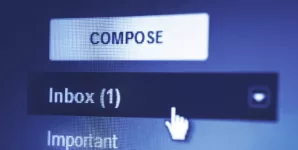Do you remember the apprehension you felt when you sent your resume to people you didn’t know? Did you await their response eagerly? Or even an acknowledgement that they read your email? Cold emails have a bad reputation, mainly because of our experience in dealing with the poorly written marketing emails that flood our own inbox.
However, even in this era of establishing business connections through platforms like LinkedIn, and Twitter, cold emails have retained their powerful potential to build sustainable business relations. They have remained an effective means of prospecting for your business, however the biggest challenge is actually getting your email read.
Every business needs sales to sustain itself and to get people interested in what you are offering. Therefore it is important to first create a need for your service or product. Cold email can do that. Whether it’s a ‘direct’ or a ‘referral’ email, it is important that the email is relevant, prepared, specific and generates an interest in what you have to offer.
So what can you do to convince a person you don’t know read your email – and even reply to it? How to write a cold email with the right punch and impact? Here are some suggestions.
1. Subject line matters
According to Convince and Convert – 35% of recipients open emails based on the subject line alone.
A subject line that generates interest can overshadow the fact that the recipient of the email does not know the sender. Adding a bit of personalization – like using the recipient’s name in the subject line – also boost the cold email open rate.
Another key aspect is to keep the subject line short and attention-grabbing without making it text heavy and giving out too much information.
2. Know your audience – use the right salutation
It is a good practice to research the recipients of your email, as it has been found that addressing the recipient by his/her name generates a higher better response in comparison to an impersonal sir/madam.
Personalization shows the recipient that you have thought about them, their interests and what they need, in other words, you have a ‘theory of mind’ about the recipient. Using correct salutation also helps in setting the tone of your email.
3. Be concise – The KISS technique
Follow the KISS technique when composing the main body of the email.
K- Keep
I –It
S- Short
S-Simple
Do not cram your email with irrelevant stuff as short emails are more likely to be read than long emails. Emails that convey clear, specific messages have a higher response rate. Long, rambling emails lack the impact and punch you desire. Treat your emails like conversations, where the main intention is to establish a connection rather than deliver a long sales pitch.
Reading your email aloud before sending it is a good practice to get rid unnecessary, irrelevant stuff.
4. Keep the ‘ask’ simple and actionable
People respond better when they do not feel cornered. Rather than telling people what you want, focus on putting them at ease by offering a choice of actions to choose from.
A statement like- “Let’s meet on Monday to discuss this further” will not be received positively as it forces the recipient to sort out the details, exert energy to make a decision.
Instead, use a statement like- “I am free on Wednesday and Thursday between 10:00 am to 2:00 pm, and if that is not convenient I am open to other suitable suggestions as well.”
5. Do not shy away from following up
It is perfectly OK to send a follow-up email after the cooling off period. However, keep in mind that sending a follow-up email too soon will make you look pushy. In order to generate a better response wait for 2-3 days before sending a follow-up email.
Understand that everyone gets busy, and tackling an inbox can be a daunting task especially at the beginning and end of the week.
Cold emails are hardest of all types of communication mainly for two reasons
- You have no prior relationship with the recipient
- There is no non- verbal feedback
However, if you treat your email as a real one-on-one conversation between two people it is possible to establish a connection that will be fruitful in the long run.
Summing up- A quick checklist for cold emails
All cold emails must include the following:
- Your real name
- Your complete contact information- job title, website, cell number, social media profiles
- Customized content for each email recipient
- A specific ask or request
- Treat the email as a conversation starter, a means to establish a connection








